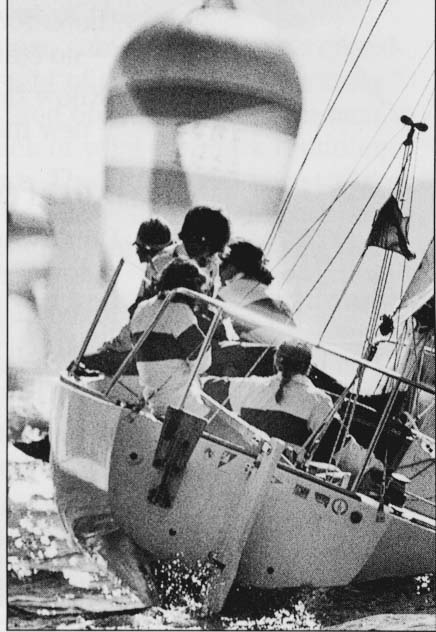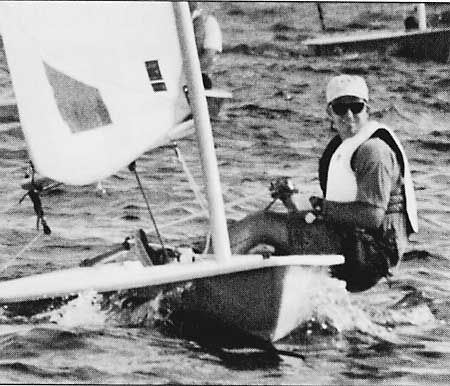
Basic Principles of Strategy
BY DAVE DELLENBAUGH
Follow these rules of thumb. Every racing situation is unique, and that’s why it’s important to keep your eyes looking up the course. The wind and water are always changing, so you must view every moment of a race as completely new. There are, however, certain stategic rules of thumb that will work in almost any situation. So, whenever you’re in doubt, stick with these tried-and-true principles to minimize risk and have your best chance of success.
• Sail the longer tack or jibe first. In other words, stay on the tack or jibe where your bow is pointed closer to the next mark. This will keep you in the middle of the course where you have more options.
• Sail toward the next shift (upwind). It doesn’t matter whether the wind-shifts are oscillating or persistent - one principle that will almost always work on a beat is to sail in the direction of the next shift.
• Sail away from the next shift (downwind). On a run, you should do the opposite of what you do on a beat. Instead of sailing toward the next shift, sail away from it. This will put you on a lower ladder rung.
• Tack on the headers (upwind). This is the best way to sail toward the next shift when you have an oscillating breeze on a beat. You tack when you’re headed because the next shift will come from the other side.
• Jibe on the lifts (downwind). This is the best way to sail away from the next shift when you have an oscillating breeze on a run.
 |
• Avoid laylines and corners. If you reach a layline too early or a corner of the course, you have usually come to a strategic dead end, both on beats and runs. Keep your options open by staying more in the middle.
• In light air, sail for pressure first, shifts second. When you don’t have much wind, getting a little more can make a big difference in both speed and pointing. so look hard for better pressure.
• In heavy air, sail for shifts first, then pressure. When you’re already overpowered, more wind won’t help you very much; that’s when you should take advantage of shifts in direction.
• In shifty winds, don’t let other boats cross you. When boats on a lift are about to cross your bow, don’t let them. Tack ahead and to leeward of them so you’ll get to the next shift b efore they do.
• In shifty winds, cross other boat when you can. This is a corollary to the principle above. When you start to look better relative to the boats on your windward quarter, tack and cross them. This way you will consolidate your gains and get to the next shift sooner.
• Minimize risk early. Don’t take chances until you have to. When it’s early in a race or series, you still have time to catch up by sailing smart, so be conservative..
 |
• When in doubt, sail the upcurrent tack or jibe first. If conditions (i.e. wind and current) remain the same, it won’t matter whether you sail upcurrent or downcurrent first. However, if something does change, it’s usually better to have sailed the upcurrent tack first because that leaves you more in the middle of the course.
Dave is a two-time America’s Cup veteran who publishes a newsletter Speed & Smarts. For a subscription call: 800-356-2200.